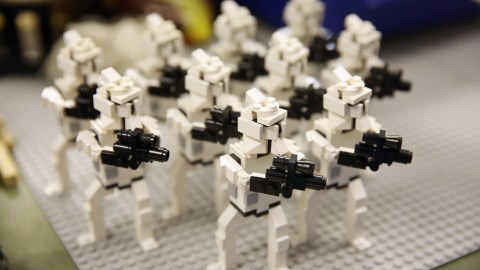Changes in LEGO Toys Show Disturbing Trend, Say Researchers

LEGO, the world’s largest toy maker, has been making increasingly more violent toys, according to new research from New Zealand scientists at the University of Canterbury.
The toys feature a growing number of weapons and sets with violent, war-like themes.
“The LEGO company’s products are not as innocent as they used to be,” said the study’s lead researcher Christoph Bartneck. “The violence in Lego products seems to have gone beyond just enriching game play.”
Researchers proposed that even if children have other influences on their lives, like TV, computer games and online play, physical toys such as LEGO bricks are still an important presence. By analyzing Lego bricks from product catalogues over the period of 1978-2014, they concluded that the violence of products increased significantly. In fact, weapons are now part of about 30% of Lego kits and about 40% of all catalogue pages contain some form of violence.
Interestingly, while the Denmark-based LEGO has been around since 1949, the first weapons in a Lego set were included as part of a 1978 Castle theme. The study does see an influence from Lego’s release of sets based on popular film properties like “Star Wars” and “Lord of the Rings”. Researchers see a clear relationship between the general rise of violence in children’s entertainment and what LEGO is offering.
Researchers conclude that the makers of games and movies “push the limits of what violent media is allowed to be released to prevent their audience from getting bored”. Thus they make increasingly violent products. Similarly, toy manufacturers are engaged in the same type of arms race for attention-getting new products, competing not only against each other, but with TV, film and video games. The cycle continues and shows no signs of abating.
For it’s part, LEGO sees their products to reflect “conflict play”, which they consider a natural part of child development. Their policy actually states that “LEGO products aim to discourage pretend violence as a primary play incentive. The designs are meant to enrich play with engaging conflict scenarios where aggression might be used for the purpose of overcoming imaginary evil.”
But as researchers point out, their products go way beyond such a goal and this policy sounds more like corporate speak that is meant to elude responsibility.
The peer-reviewed study is published here in PLOS One.







